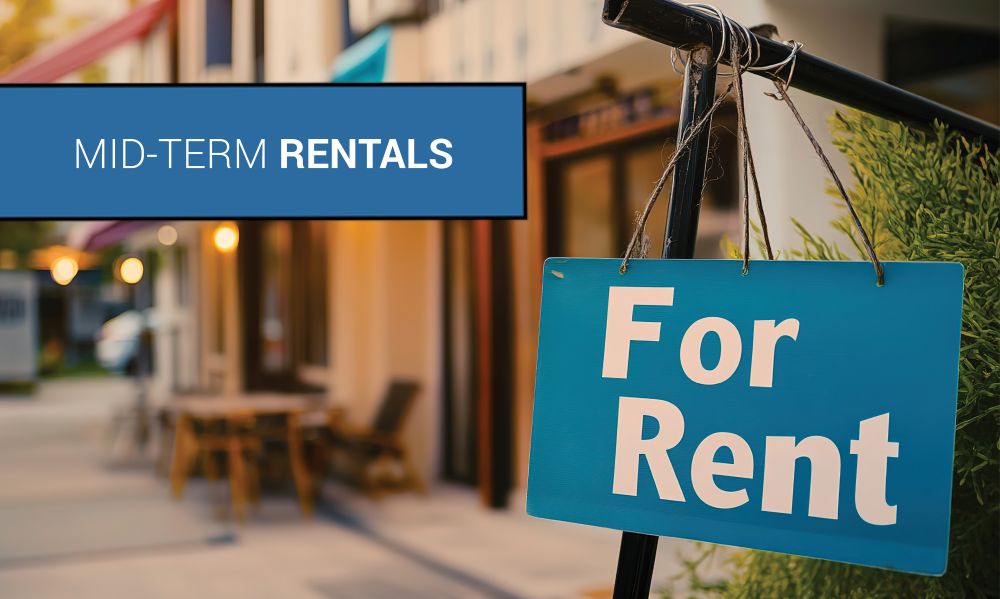The rental market isn’t just about weekend getaways or year-long leases anymore. A growing segment—mid-term rentals—is carving out space between short-term vacation rentals and traditional housing. Think leases that run one to six months, furnished, flexible, and tailored for people in transition.
What Counts as a Mid-Term Rental?
A mid-term rental (MTR) is typically:
- Fully furnished so tenants can move in with just a suitcase.
- Flexible on lease length, often 1–6 months.
- Priced higher than traditional rentals but often cheaper than nightly rates.
- All-inclusive, with utilities and Wi-Fi baked into the rent.
These aren’t meant for tourists booking a long vacation. Instead, they target relocating professionals, traveling nurses, remote workers, interns, and homeowners between moves.
Why Demand is Rising
- Work mobility – Remote and hybrid work means people can try living in new cities without committing long-term.
- Healthcare staffing – Traveling nurses often need three-month housing.
- Life transitions – Divorce, home renovations, or waiting for a new build push people into temporary housing.
- Corporate housing alternatives – Companies want flexible, cost-effective accommodations for short-term assignments.
Why Landlords Are Paying Attention
Mid-term rentals can be a sweet spot for returns. They often bring in more income than long-term leases without the churn of constant turnovers like short-term rentals. You also avoid some regulatory headaches—many cities’ short-term rental restrictions don’t apply to stays of 30 days or more.
Pros for property owners:
- Higher monthly rates than long-term tenants.
- Lower wear and tear than nightly turnover.
- Fewer vacancies compared to short stays.
- A more stable and predictable tenant profile.
Cons to consider:
- Furnishing and maintaining the unit.
- Finding reliable tenants between leases.
- Seasonal dips in demand depending on your market.
Tips for Success in Mid-Term Rentals
- Target the right tenants – Partner with travel nurse agencies, corporate housing networks, or relocation services.
- Price smartly – Research both the long-term and short-term markets in your area to find a profitable middle ground.
- Offer convenience – Include utilities, fast Wi-Fi, and washer/dryer access.
- Focus on comfort – Think hotel-level cleanliness and functionality, but with a “home” feel.
- Stay compliant – Check local laws to avoid accidentally falling into short-term rental regulations.
The Bottom Line
Mid-term rentals aren’t a passing trend—they’re part of a bigger shift in how people live and work. For landlords, they can balance profit and stability. For tenants, they offer flexibility without sacrificing comfort.
If you’ve got a property in a high-demand area—near hospitals, business hubs, or universities—it might be time to explore the mid-term rental space.


